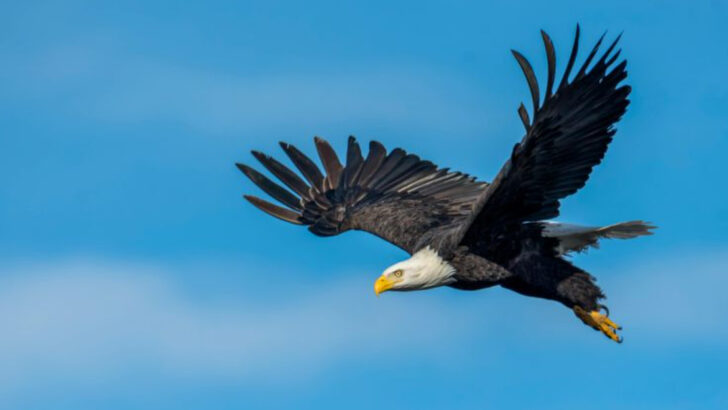America’s birdlife offers a surprising range of colors, calls, and behaviors that often go unnoticed in everyday life. These birds aren’t just part of the background—they highlight the variety and richness of the landscapes they inhabit, from forests to deserts and coastlines. Each one brings something unique to the scene.
Some stand out for their striking plumage, while others impress with their incredible songs or unusual habits. Paying attention to these birds can give a fresh perspective on the natural world around us, reminding us of the beauty that exists just beyond the window.
Bald Eagle
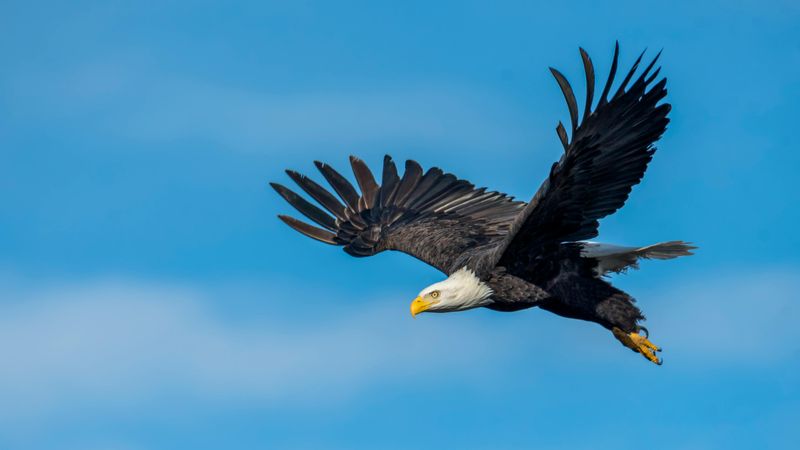
Symbolizing freedom and power, the bald eagle commands the skies with an unmatched grace. Observing one in its natural habitat can be a transformative experience. With a wingspan that can reach eight feet, it effortlessly glides through vast landscapes.
These iconic raptors are often spotted near large bodies of water, where they skillfully hunt for fish. Their nests, known as aeries, can be enormous, weighing up to a ton. Conservation efforts have led to a remarkable recovery of their population, making them a true success story in wildlife preservation.
American Avocet
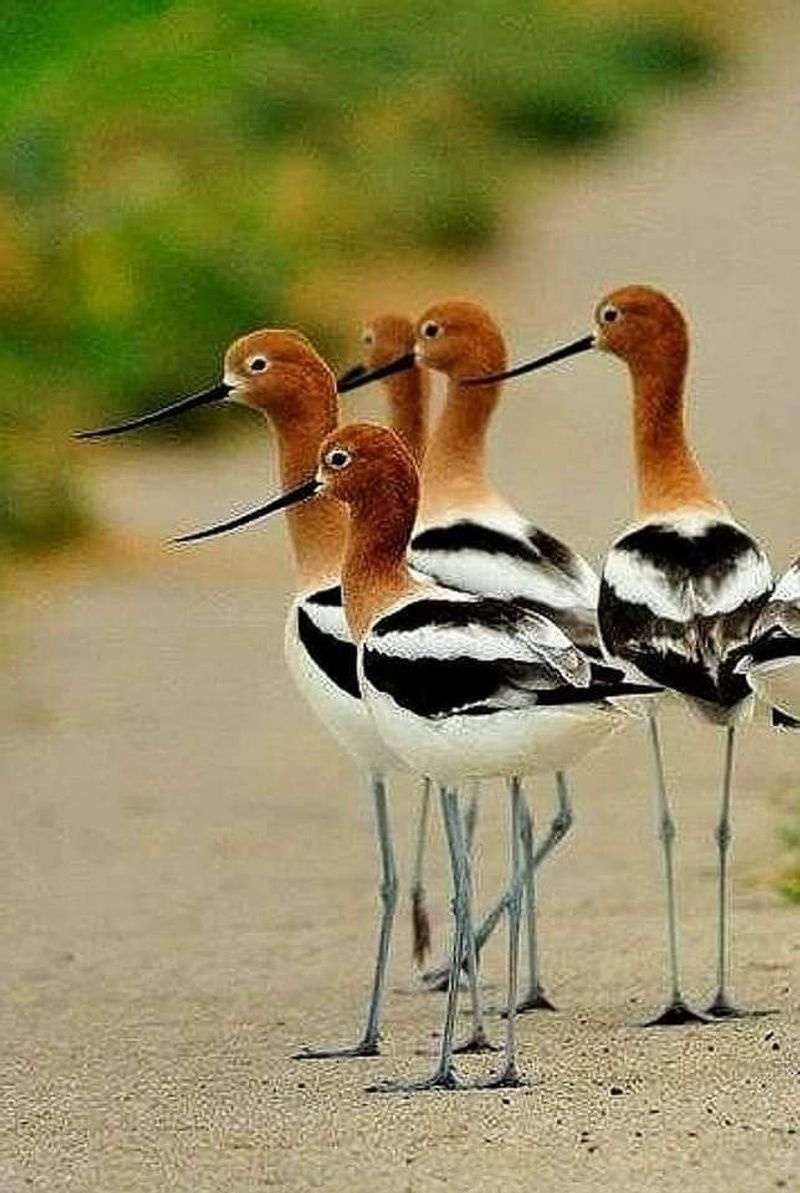
Graceful and elegant, the American Avocet is a sight to behold in the wetlands. Its long, upturned bill is perfect for sweeping through water in search of food.
With striking black-and-white plumage, this bird is as beautiful in flight as it is while wading. Its elegant dance-like movements are fascinating to watch.
Often found in shallow waters, the Avocet’s unique foraging technique makes it a marvel in the bird world.
Did you know? These birds are monogamous and often return to the same breeding site year after year.
Peregrine Falcon

Known as the fastest bird, the peregrine falcon is a marvel of speed and precision. Reaching speeds of over 240 mph during its hunting stoop, it is a masterful predator.
This falcon’s keen eyesight allows it to spot prey from great distances. Typically found in high cliffs or urban skyscrapers, its adaptability is impressive. Conservation efforts have helped this once-endangered species thrive, allowing more to witness its breathtaking aerial displays. Its recovery story continues to inspire conservationists worldwide.
Painted Bunting
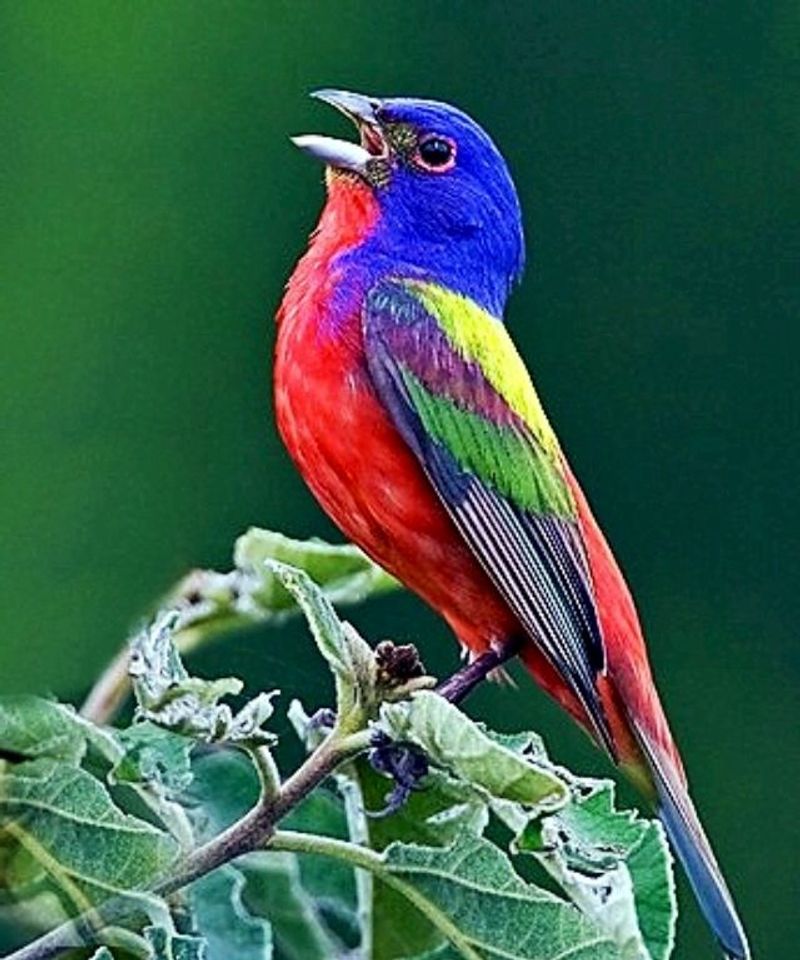
The Painted Bunting is nature’s masterpiece, with its vivid colors that look like a painter’s palette. Males boast a rainbow of hues, from blue heads to red underparts.
This bird is often heard before seen, with a sweet, melodic song that enchants listeners. It’s like spotting a living jewel in the dense foliage.
Found primarily in the southeastern United States, these birds are a delight for birdwatchers and nature lovers alike.
Interestingly, despite their bright appearance, they can be quite elusive.
Burrowing Owl
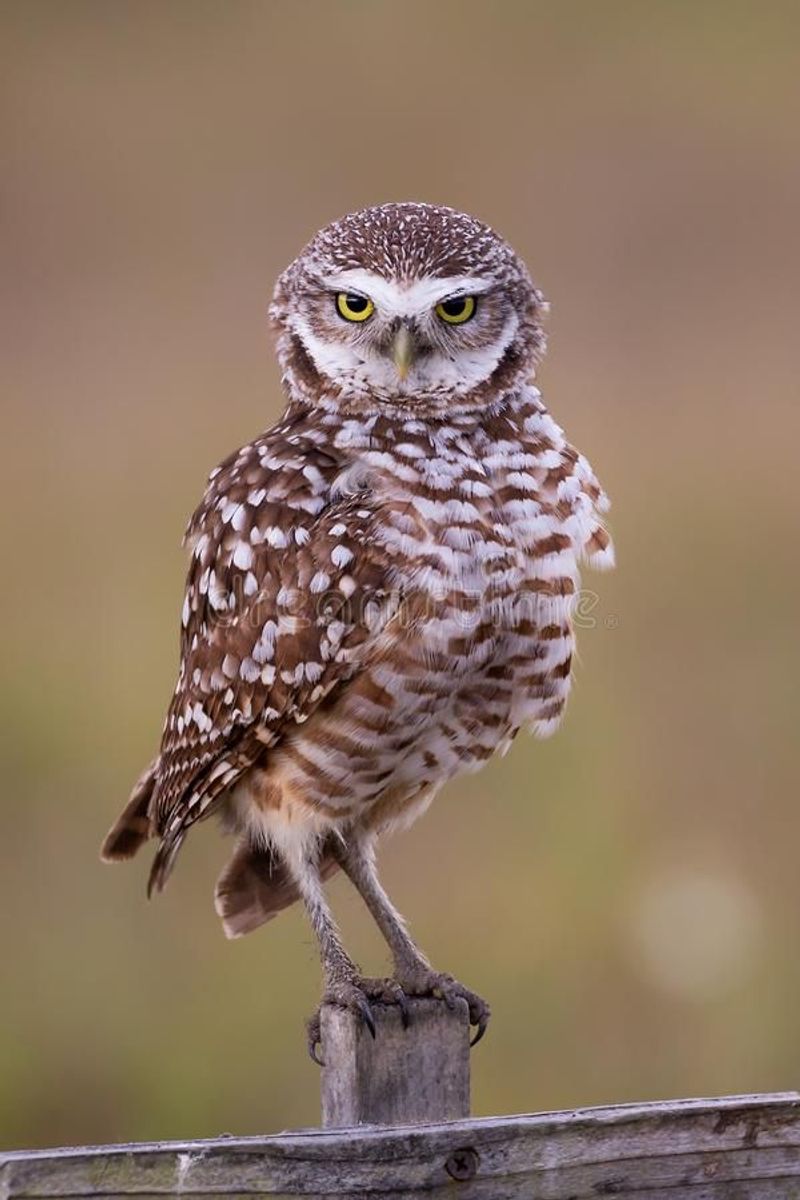
The Burrowing Owl, with its inquisitive gaze, is known for living underground rather than in trees. Its long legs give it a comical appearance.
Often seen standing watchful at the entrance of its burrow, this owl is a true character of the prairies and deserts. Its diet mainly consists of insects and small mammals.
Did you know? Unlike other owls, the Burrowing Owl is active during the day. Its quirky behavior and unique habitat make it a favorite among bird enthusiasts.
American Goldfinch
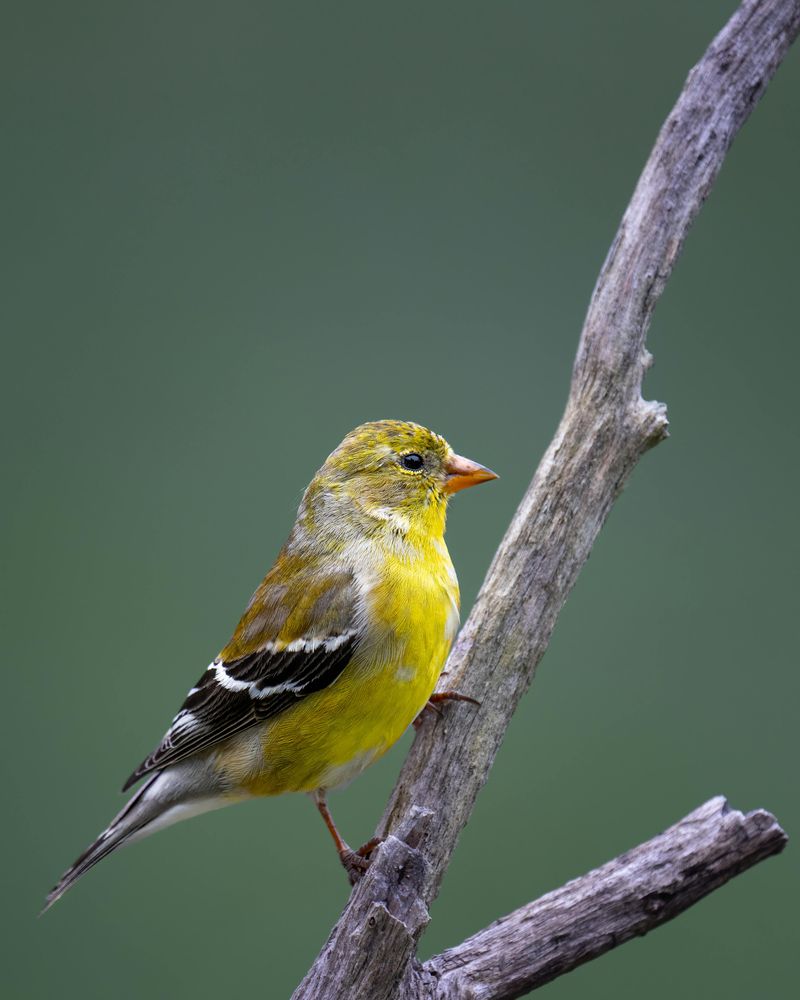
The cheerful American goldfinch is a delightful sight with its bright yellow feathers and melodic song. Often found fluttering in fields and gardens, it adds a splash of color to any landscape.
They’re particularly known for their unique feeding habits and seed-based diet. During the summer months, their plumage becomes a striking yellow, making them easily recognizable. As autumn approaches, their feathers molt to a more subdued hue, showcasing nature’s adaptability. Observing them can be a joyful addition to any bird-watching endeavor.
Red-headed Woodpecker
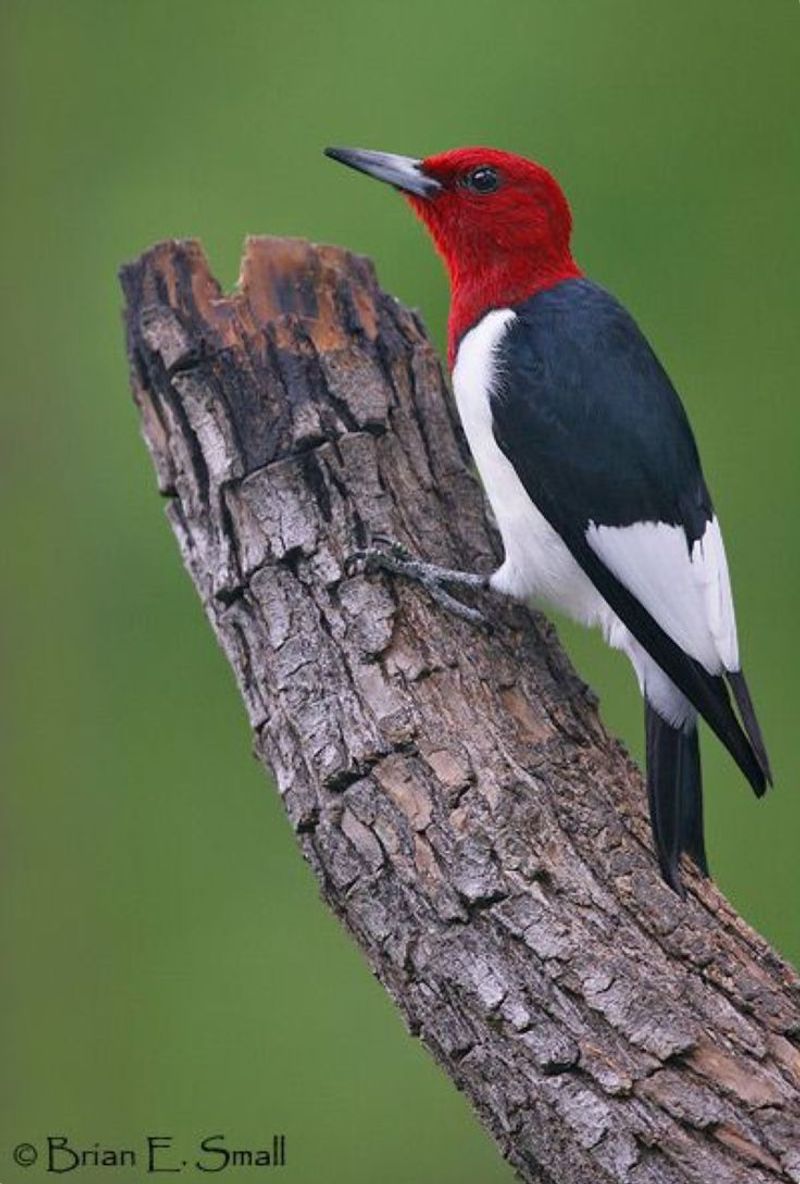
With a flash of red among the trees, the Red-headed Woodpecker is hard to miss. Its striking red head contrasts vividly with its black-and-white body.
This bird is a versatile forager, known to catch insects mid-air and store food in tree crevices for later.
Living in open woodlands and savannas, it plays a crucial role in maintaining the health of its ecosystem by controlling insect populations.
Fun Fact: These woodpeckers are known for their acrobatic flight patterns, making them a joy to watch.
Sandhill Crane
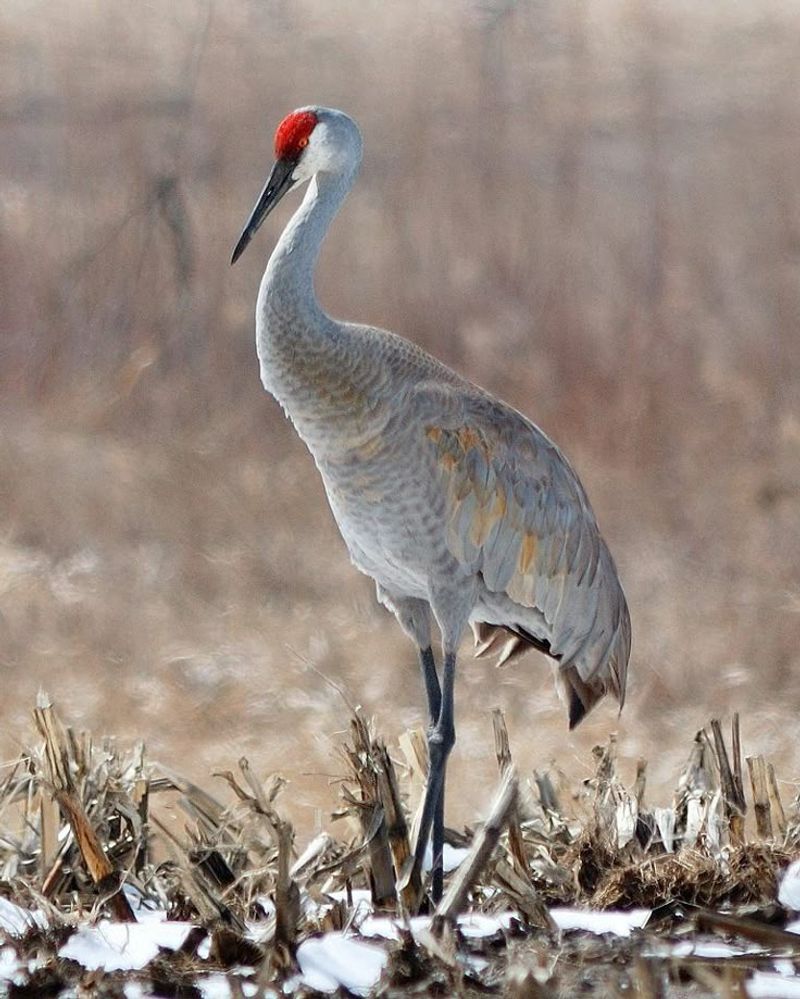
The Sandhill Crane, with its regal stature and graceful movements, is a symbol of elegance in the wild. Standing tall with long legs, it moves with a sense of purpose.
These cranes are known for their spectacular migration, often traveling thousands of miles in large flocks. Their loud, trumpeting calls can be heard from afar.
Found in meadows and marshes, they demonstrate impressive courtship dances that are a sight to behold.
Interestingly, Sandhill Cranes have been around for millions of years, making them one of North America’s oldest bird species.
Roseate Spoonbill
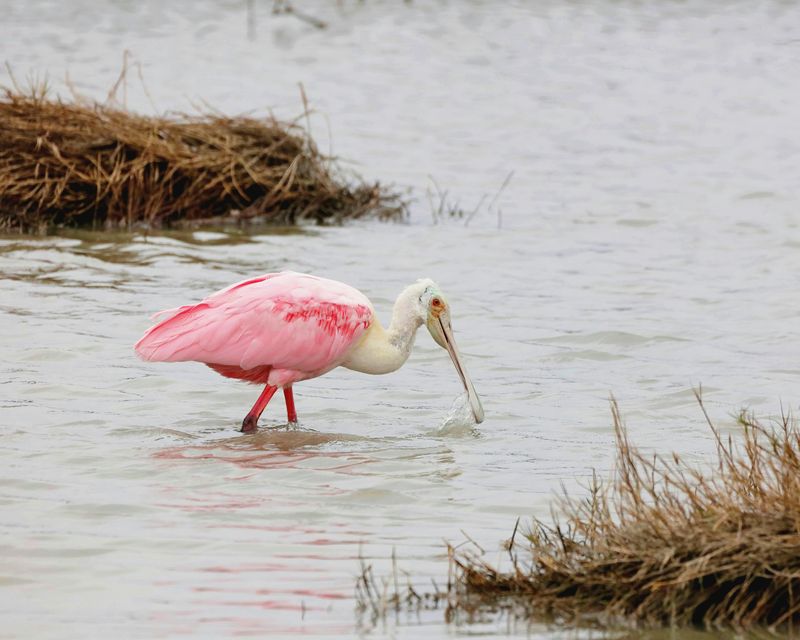
With its distinctive pink plumage and spatula-shaped bill, the roseate spoonbill is truly a sight to behold. Often seen wading in shallow waters, they sweep their bills side-to-side to catch small fish and crustaceans.
Their vibrant coloring is due to the carotenoid pigments in their diet. These birds are usually found in the southeastern United States, particularly in Florida’s marshes and mangroves. Watching a flock take flight is a spectacular experience, as their pink wings create a stunning visual against the sky.
Snowy Owl
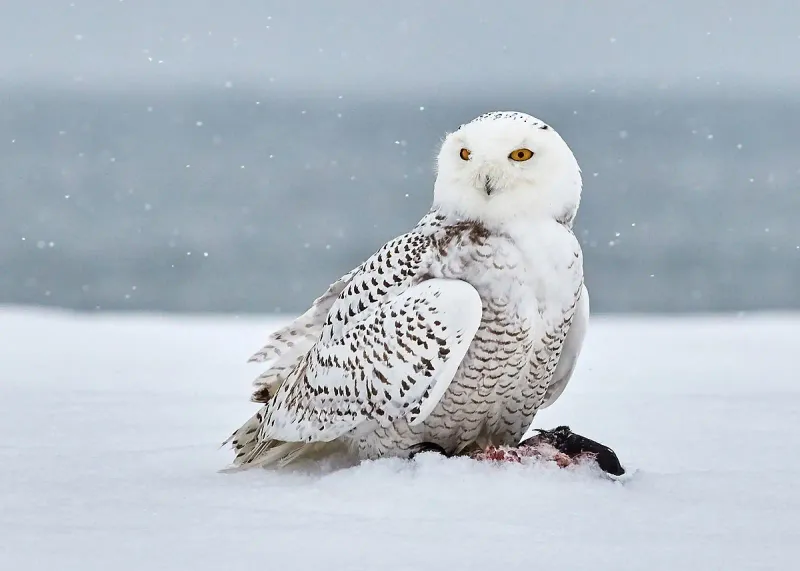
Epitomizing the serene beauty of the Arctic, the snowy owl captivates with its ghostly white plumage. Its presence signals the onset of winter as it migrates south in search of food.
These owls prefer open landscapes, where they expertly hunt for rodents and other small mammals. Known for their silent flight, snowy owls are a favorite among bird enthusiasts. Their enigmatic nature and majestic appearance have made them subjects of folklore and admiration across cultures.
Ruby-throated Hummingbird
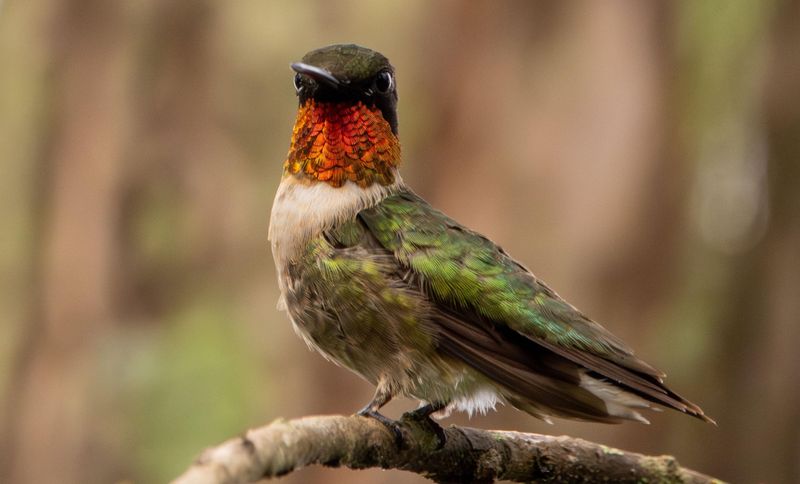
Tiny yet tenacious, the ruby-throated hummingbird enchants with its iridescent emerald feathers and rapid wing beats. It’s a remarkable long-distance migrant, traveling over 2,000 miles from Central America to North America for breeding.
They are adept at maneuvering through gardens, seeking nectar from flowers, and pollinating as they go. The ruby throat of the males shimmers brilliantly, a testament to nature’s artistry. Creating a hummingbird-friendly environment can invite these dazzling creatures to your backyard, offering endless fascination.
California Condor
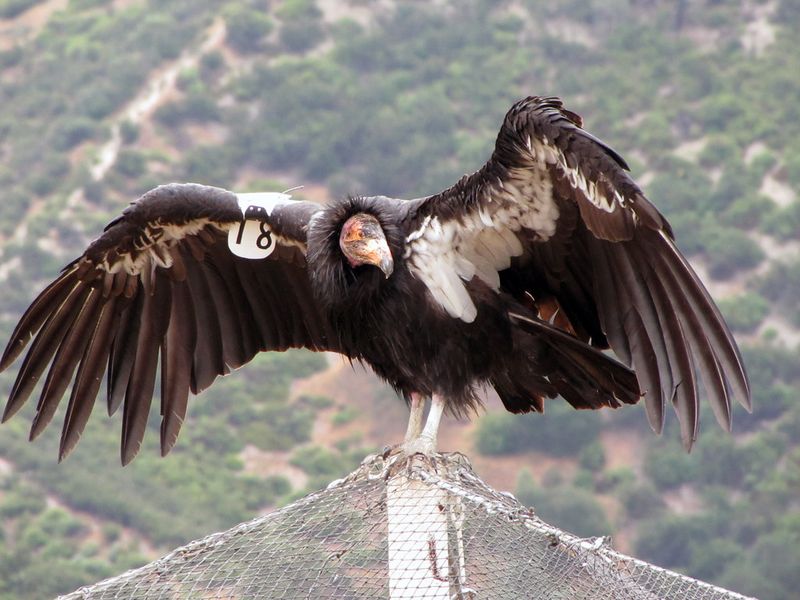
Once on the brink of extinction, the California condor now soars as a triumphant symbol of conservation success. With a wingspan that can exceed nine feet, it is North America’s largest flying bird.
These scavengers play a vital role in their ecosystem by cleaning up carrion. Found primarily in the southwestern United States, their recovery has been a concerted effort by numerous wildlife organizations. Spotting a condor in flight over the Grand Canyon is a breathtaking spectacle, embodying nature’s resilience.
Scarlet Tanager
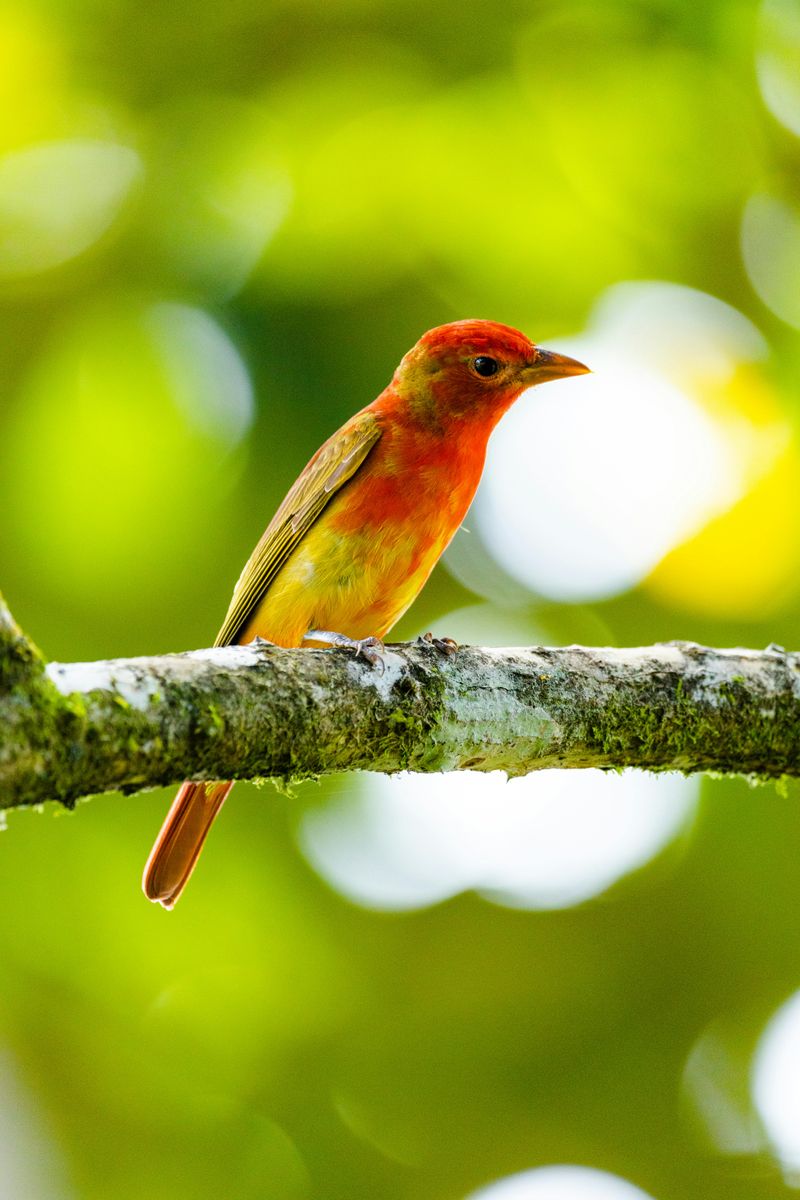
The scarlet tanager dazzles with its brilliant red feathers and contrasting black wings. Found in deciduous forests, this bird is often heard before it’s seen, thanks to its melodic song.
During migration, these birds travel thousands of miles to their wintering grounds in South America. Their striking appearance in the spring makes them a favorite among bird watchers. By preserving their forest habitats, we ensure that future generations can continue to marvel at their vibrant beauty.
Eastern Bluebird
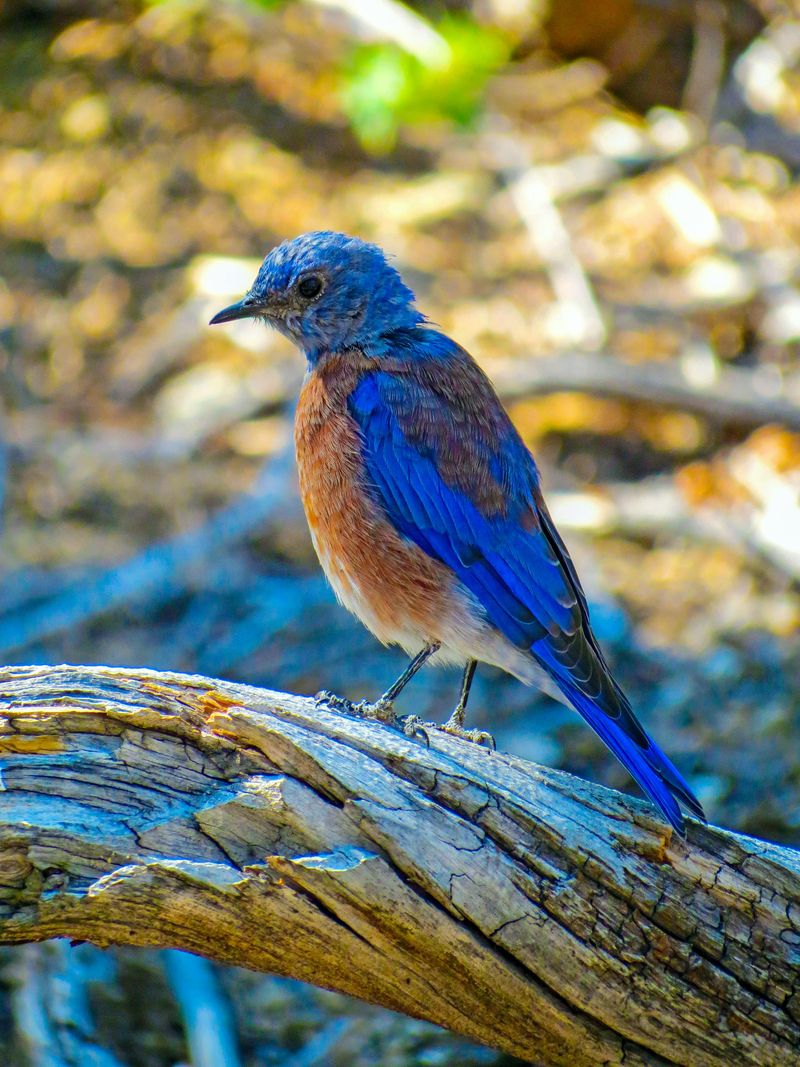
A symbol of happiness and hope, the eastern bluebird enchants with its vivid blue plumage and cheerful song. Preferring open woodlands and farmland, they often nest in tree cavities or birdhouses.
Their diet consists mainly of insects and berries, making them beneficial for pest control. With conservation efforts, bluebird populations have rebounded, bringing joy to many who spot them. Providing nesting boxes in your yard can support these charming birds, ensuring their delightful presence in local ecosystems.
Great Horned Owl
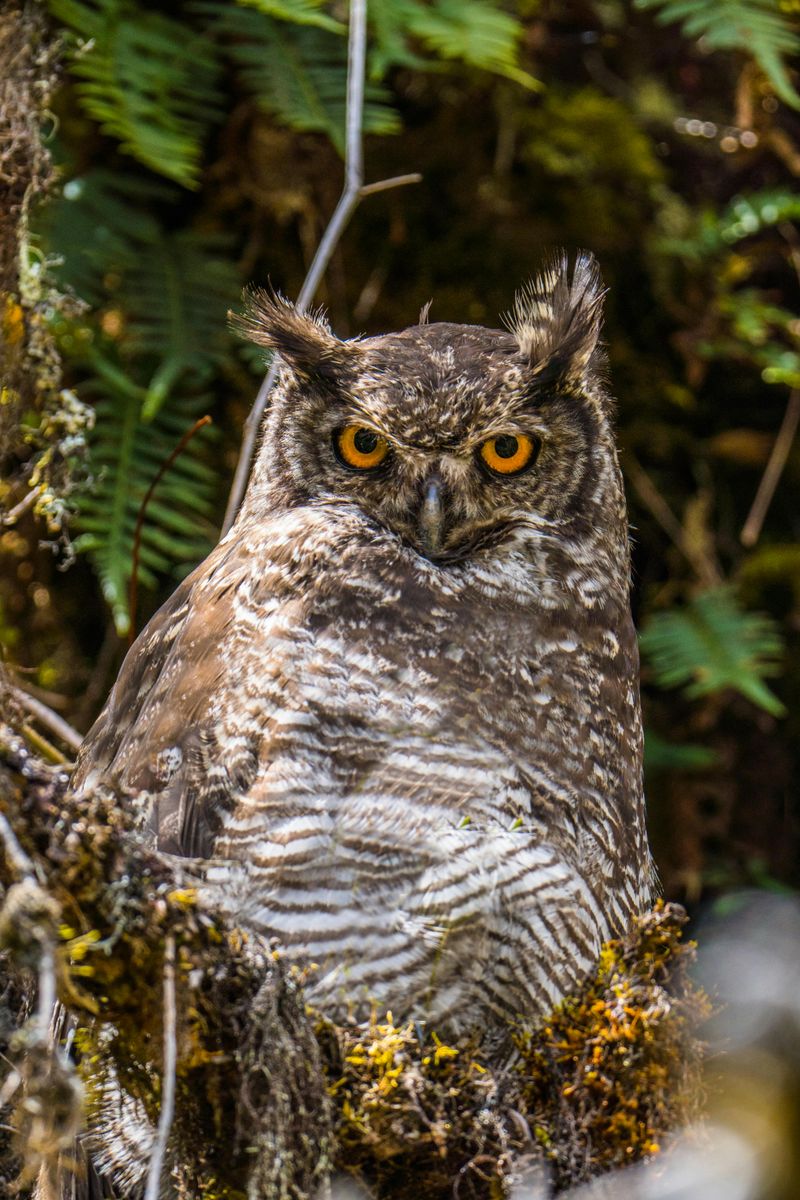
With its imposing stature and distinctive tufts, the great horned owl is a formidable presence in the nocturnal world. Its deep hoots echo through forests and fields, a haunting yet beautiful symphony.
This adaptable predator preys on a variety of animals, from small rodents to larger birds. Its powerful talons and silent flight make it an efficient hunter. Reigning as one of the top avian predators, the great horned owl plays a crucial role in controlling populations of its prey.

